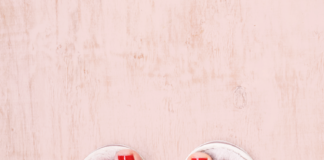
Matching paint colors that other people have chosen can be incredibly difficult and frustrating. In fact it can even be difficult to match your own paint colors if you haven’t taken the time and trouble to keep careful notes of the colors you have used. However paint technology has advanced to such an extent that it is possible to achieve practically any hue. But if you are buying color to order, each of these is mixed according to a specific formula established by each different paint company
Apart from specially mixed paint colors, all paint companies produce their own standard color ranges, most of which are so similar to their competitors that nobody really bothers to compare them. But if you paint Company A’s paint on a wall, and then finish the paint job with what you consider to be “the same” paint color from Company B, chances are you are going to find that the colors don’t match. Well they might look similar, but they probably aren’t going to be an exact match. The solution to this problem is to ensure that you use exactly the same paint to complete or patch a job. This means not only the color, but also the paint manufacturer. The color may even vary slightly according to the batch in which it was mixed – or because of its age.
But what if you buy a property and find that you have to match paint colors without any help from those who did the original paint job? In other words you don’t have access to the people who specified or used the paint in the first place. Alternatively, a specially mixed color may have been used. If this is the case, a good solution is to go to a paint store and get a selection of paint cards with similar colors. Depending on the age of the paint surface you are trying to match, you may surprise yourself on how easy this exercise actually is.
If you need to paint – or repaint – within an existing room, an obvious solution is to take a sample of something that is the color you want (even a chip of plaster will be do) to your store and ask for their help. Usually they will mix paint and then let you see the color before you buy. Stores aren’t likely to experiment, if you don’t guarantee you will pay for the paint; but they will often do what it takes to match colors for their clients.
Many creative people don’t really care about mixing paint colors. In fact they prefer to play around with hues that they blend with one another. Many interior decorators also like to mix their own paint colors, using the tinters that the professional paint companies use. In fact if you are really serious about trying to match paint colors, and find that you can’t get the exact match from a commercial company, you could try adding tinters yourself. For example, if you are trying to achieve a “dirty” pinkish hue, and the color you have been supplied with is too pure (or clean), you could add a bit of raw umber to change a particular paint color slightly (or even quite dramatically). Most good paint shops will sell you these tinters in small (or if you wish quite large) containers.
Decorative painters, employed to create broken paint effects on walls (like ragging or sophisticated color washing), generally prefer to mix their own colors. This way they can match paint colors in their own particular way. For example, they may start with a basic hue that fits the interior design, and then they can use tinters to lighten, darken, brighten or subdue the original color. Eventually it becomes a glorious mix which forms a specific palette for the room they are painting. If you think about it you will realize that decorative paint finishes often comprise a variety of hues, each of which melds with the next. So one bit of the wall might have more orange in it while the other is browner. This way the painter can match fabrics and create quite dramatic color and pattern effects.
If you are approaching color for the first time, don’t be threatened by the need to “match” color. Also don’t be put off by the rules that experts throw around. Rather be guided from the world around you. If you start paying attention to nature, you might start to notice that colors don’t always “match” in nature. You will find reds, oranges and yellows all existing beautifully together.
By the same token, if you have a color theme in your home, it is a good idea to try and make the colors work together. It’s up to you to decide on the balance.
Essentially what you need to do is to decide on an overall decorative theme – or scheme – for your room or home as a whole – and then you can work on the colors. Paint is a wonderful tool, and by matching and contrasting colors, you can achieve your own individualist effect. Match paint colors by all means, but make certain the meet your needs.






































